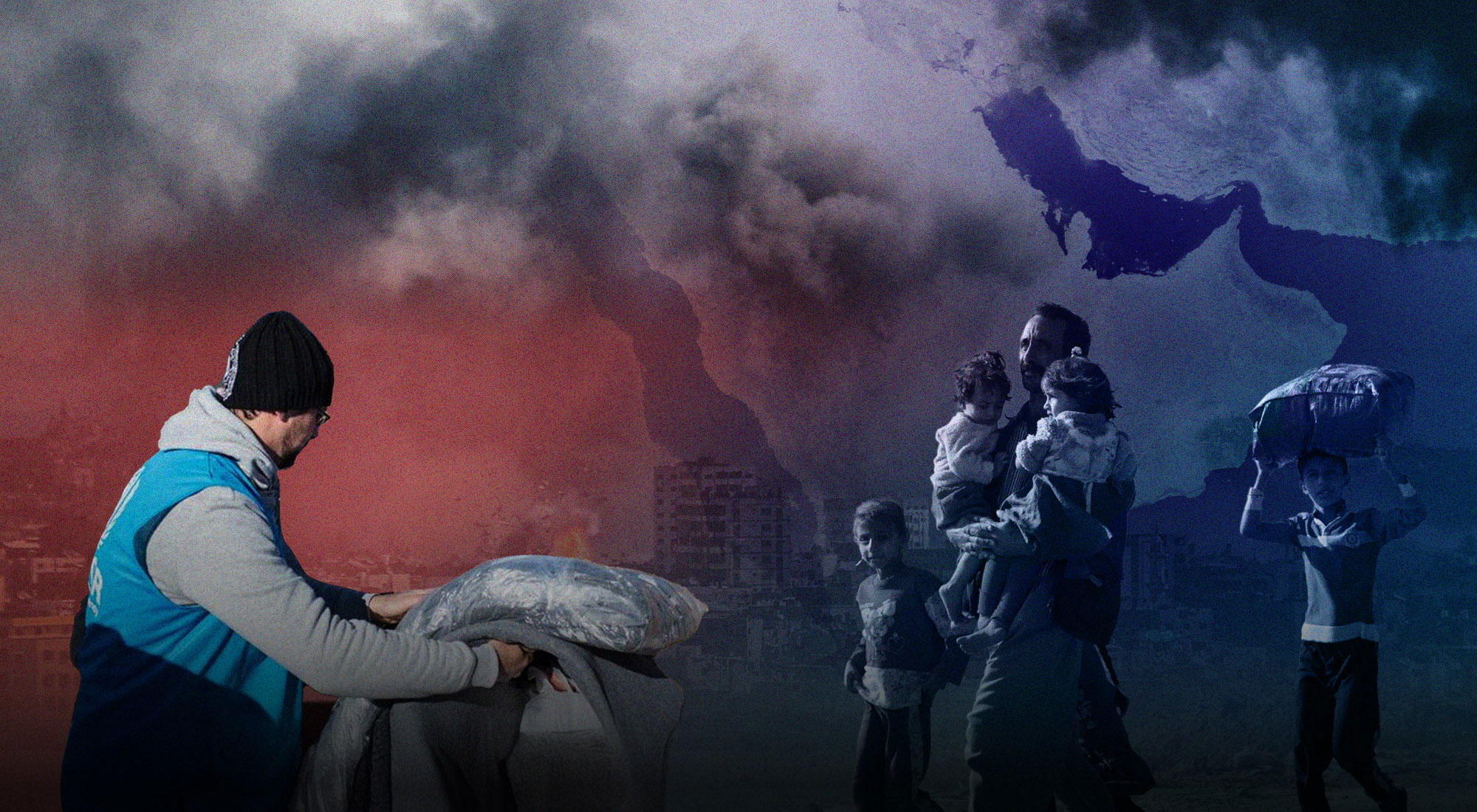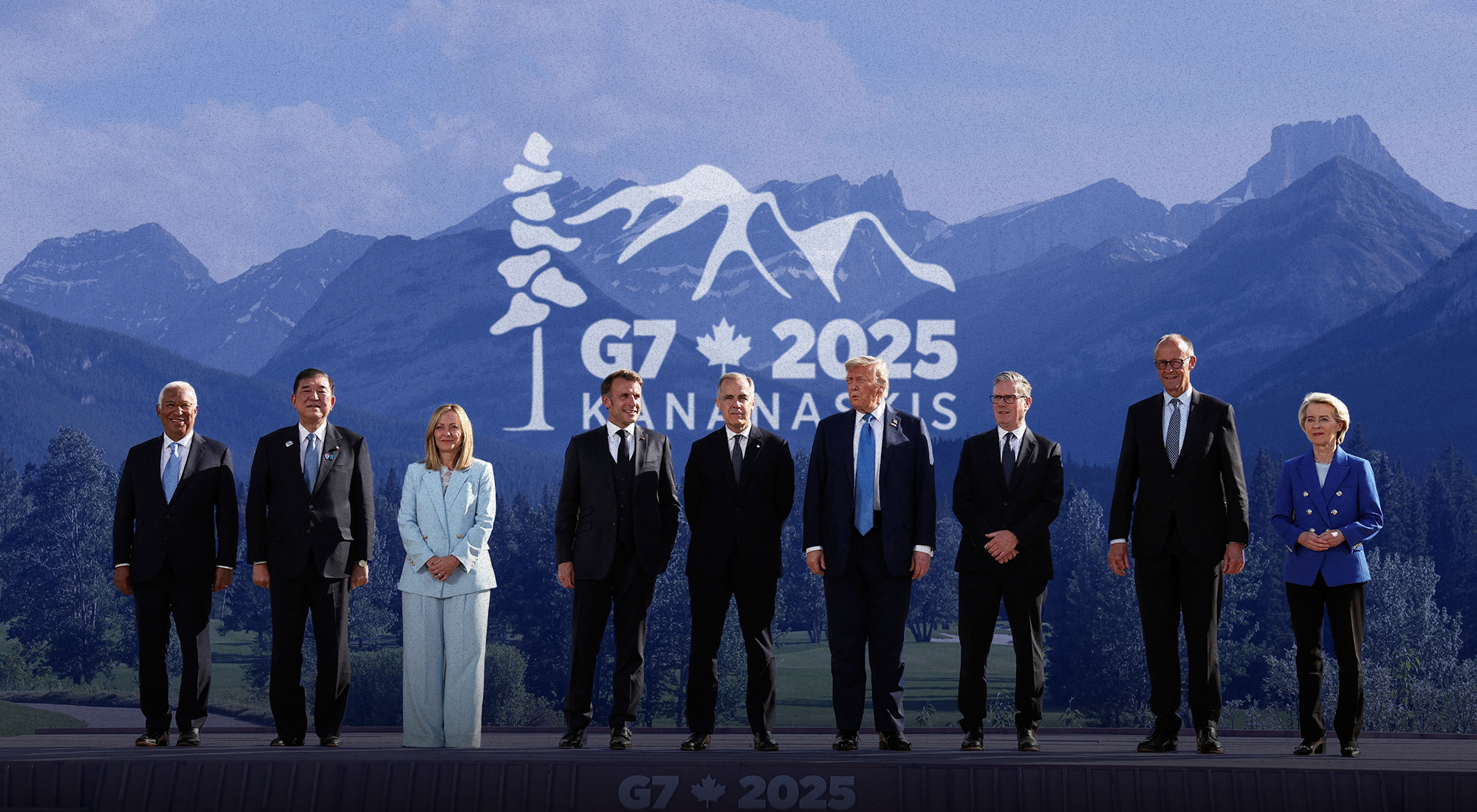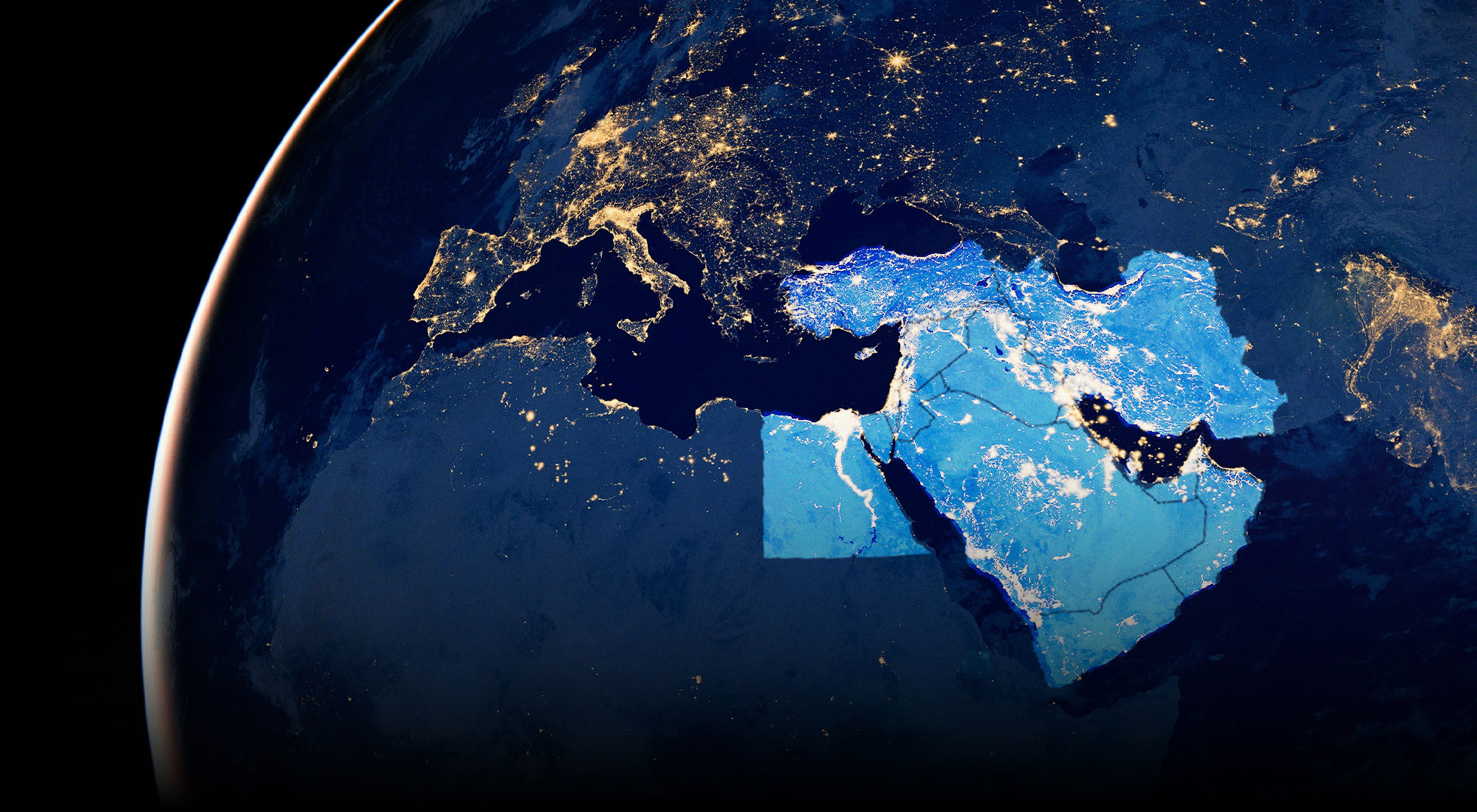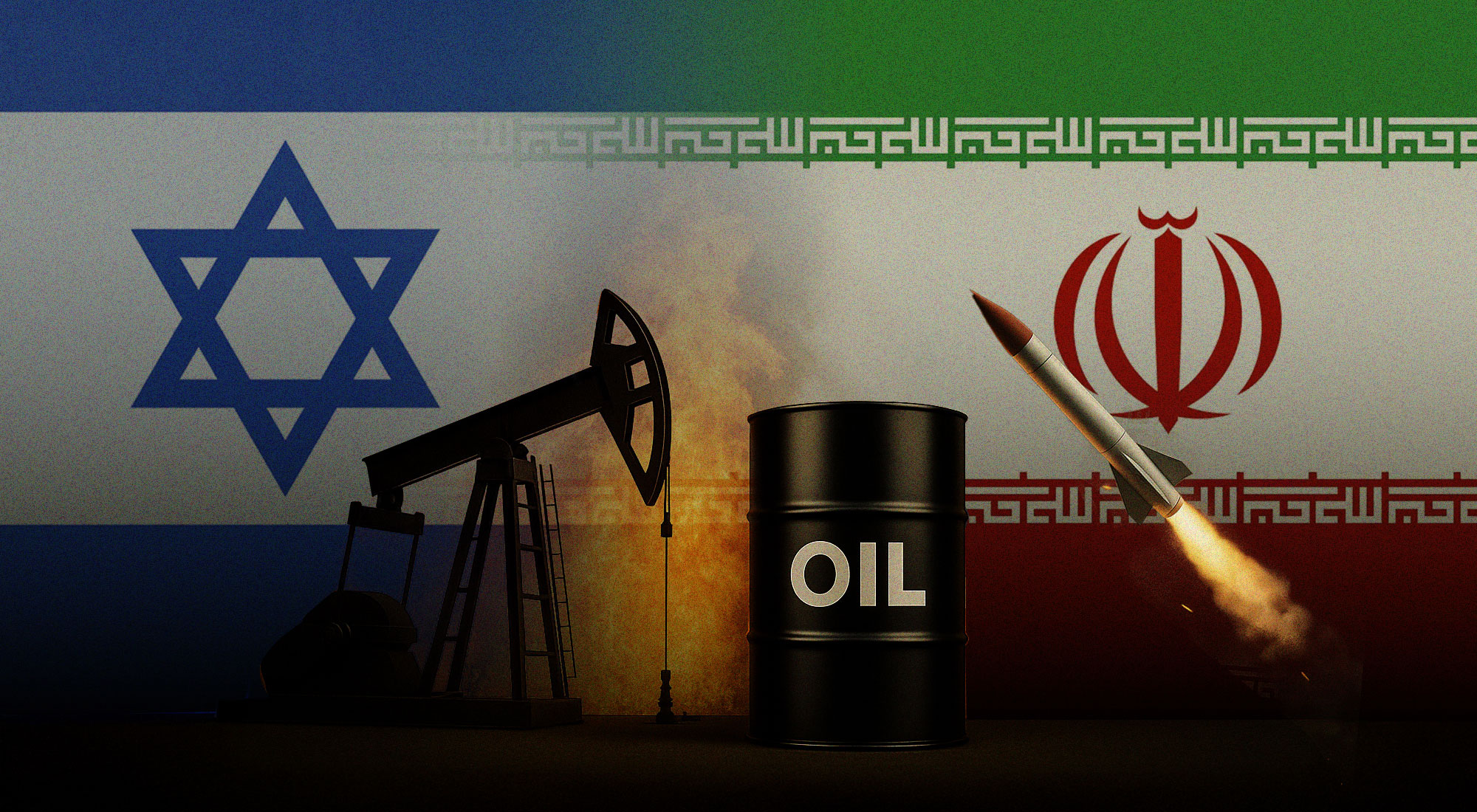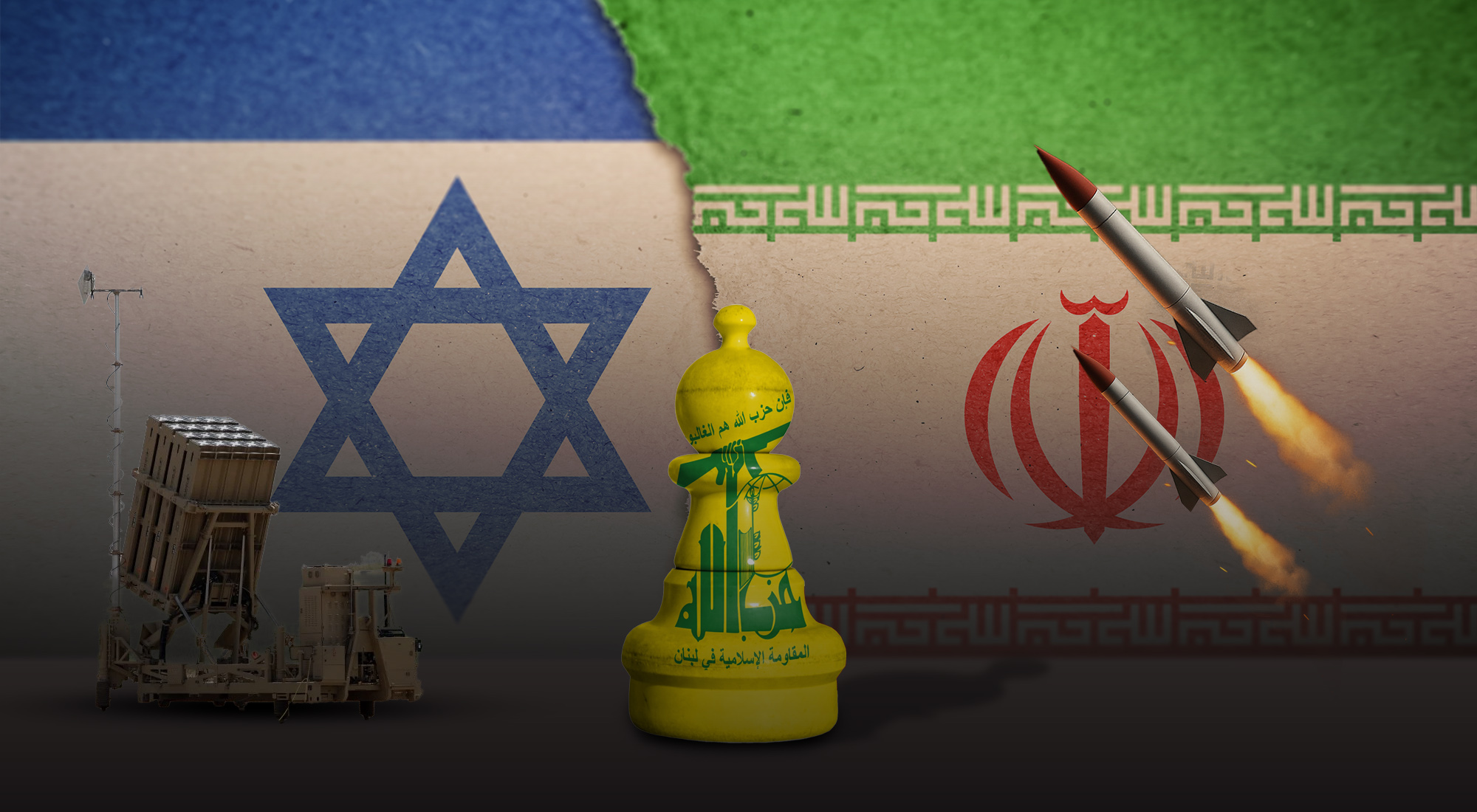The Middle East and North Africa (MENA) region is at the heart of one of the most pressing refugee crises in the world today. Out of the 122.6 million people who have been forced to flee their homes globally, most (about 71 percent) now live in low-income countries.[1] In the MENA region alone, by early 2025, nearly 17 million people were expected to be displaced or stateless.[2] These figures reflect systemic humanitarian vulnerabilities affecting displaced populations, including limited access to healthcare, employment, shelter, and food security. Despite these constraints, many refugees have demonstrated an ability to adapt to new environments—underscoring the importance of institutional support mechanisms facilitated by host governments and non-governmental organizations. However, persistent instability and the threat of secondary displacement continue to challenge efforts toward long-term integration and recovery.[3]
Non-governmental organizations (NGOs) play a key role in supporting those struggling. Since the 1950s, NGOs have worked side by side with the UN Refugee Agency (UNHCR) to deliver aid, run camps, set up schools, and offer job training. Their presence provides a beacon of hope and support amid crisis. Today, UNHCR gives about 40 percent of its yearly budget to over 900 NGO partners, showing how essential they are to relief efforts.[4] Their work reassures that even in the face of such immense challenges, dedicated organizations are working tirelessly to make a difference.
This study examines the strategies and effectiveness of non-governmental organizations in responding to large-scale displacement in the Middle East, with a focus on case analyses of crises in Syria, Sudan, and Yemen. Utilizing qualitative data from organizational reports, it aims to answer the following central questions:
1- How do NGOs adapt their programs to the specific conditions in Syria, Sudan, and Yemen?
2- What are the main challenges—security, funding, or coordination—that hinder their work?
3-How can funding and partnership models be improved to make NGO efforts more sustainable?
By employing a comparative framework, this paper highlights context-specific lessons learned and identifies cross-cutting themes that can inform more coherent policy and practice. The findings are intended to provide actionable guidance for humanitarian actors, donors, and policymakers who seek to strengthen coordination mechanisms, optimize funding models, and enhance protection strategies throughout the region.
Methodology and Scope
This study employs a qualitative case-study design to assess NGO responses in Syria, Sudan, and Yemen. It draws on three data types: 1- UNHCR’s MENA Regional Overview and country reports for displacement figures and funding gaps. 2- Program descriptions and impact summaries from key NGO websites (IRC, MSF, Save the Children, NRC). 3- Practitioner briefings for operational insights. Cases were selected for their varied conflict drivers and governance contexts, facilitating cross-case comparison. Limitations include restricted access to active combat zones, differing NGO reporting periods, and minimal coverage of smaller, community-based organizations. While these constraints shape the scope of findings, the comparative framework, nonetheless, should deliver robust insights into shared obstacles and best practices in NGO response across the region.
Case Study 1: Syria
Crisis Background
Since 2011, Syria’s civil war has produced the largest displacement crisis in the MENA region. By mid-2024, 7.4 million people were displaced within the Syrian Arab Republic and 5 million registered refugees in the region, including around 3 million in Türkiye.[5] Destruction of homes, hospitals, schools, and infrastructure has left millions without reliable access to food, health care, education, or safe shelter.[6]
NGO Interventions
- International Rescue Committee (IRC): The IRC offers support, including fuel, medical treatment, hygiene supplies, and financial aid, to ensure that communities remain warm and healthy during the winter. They report that approximately 16.7 million Syrians urgently require humanitarian aid. [7]
- Médecins Sans Frontières (MSF): MSF manages hospitals and mobile clinics in northern Syria, where its teams address the needs of the population. They have provided trauma and surgical supplies to hospitals throughout the northwest and also distribute hygiene kits, mattresses, and blankets.[8]
- Save the Children: Established in 2012, Save the Children has impacted over 8.3 million individuals, with 4.8 million of them being children, by providing non-formal education, nutrition initiatives, and emergency relief assistance. [9]
- Norwegian Refugee Council (NRC): With staff in Damascus, northwest, and northeast Syria, the NRC assisted 699,313 people across Syria in 2024, providing education, legal aid, livelihoods support, shelter repair, and WASH (water, sanitation, and hygiene) services.[10]
Impact and Outcomes
- IRC’s cash grants and winter kits enabled over 200,000 households to cover heating and food costs in late 2024.[11]
- MSF’s trauma teams performed hundreds of life-saving surgeries, and its vaccination outreach reached over 30,000 children under five in 2024.[12]
- Save the Children re-enrolled 150,000 out-of-school children in learning programs, improving retention and literacy rates.[13]
- NRC’s shelter and WASH projects restored safe housing for 200,000 individuals and recorded a 35 percent drop in waterborne diseases in targeted areas.[14]
Challenges Encountered
NGOs in Syria operate amid challenging political and security conditions that are worsened by rising inflation, reduced donor engagement, and a declining acceptance of individuals receiving support from UNHCR.[15] Appeals for 2025 remain underfunded by over 40 percent, forcing program cuts and limiting coverage. Security risks frequently impede access to vulnerable communities, while coordination among UN agencies, international NGOs, and local partners can be fragmented, leading to service gaps. Imposed bureaucratic barriers such as restrictive registration processes and limitations on area access undermine NGO neutrality and delay operations. In opposition-held areas, local militias often interfere with aid delivery, either demanding loyalty or siphoning resources, complicating coordination efforts and heightening the risk of politicization of humanitarian assistance.
Case Study 2: Sudan
Crisis Background
The conflict that began in April 2023 between the Sudanese Armed Forces and the Rapid Support Forces precipitated the largest displacement crisis of the year. By mid-2024, 6.1 million Sudanese were internally displaced, and 1.5 million people had fled abroad for safety in neighboring countries, including Chad, Egypt, Ethiopia, and South Sudan.[16] As of October 2024, nearly 3 million more refugees arrived in host states, while over 8 million people inside Sudan remained uprooted or living in makeshift camps amid recurrent flooding and severe food shortages.[17] Nearly half of Sudan’s 49.4 million population required urgent humanitarian assistance by late 2024, with famine officially declared in parts of North Darfur.[18]
NGO Interventions
- International Rescue Committee (IRC): According to the IRC’s briefing on the “Crisis in Sudan,” more than 12 million people have been forcibly displaced since April 2023, making it the largest and quickest displacement crisis globally. Additionally, it states that 30.4 million people—over half of Sudan’s population—require urgent humanitarian assistance. The IRC operates emergency health centers for malnutrition treatment, distributes food and hygiene kits, provides multipurpose cash assistance, and runs protection programs for women and children in both Sudan and neighboring countries.[19]
- Norwegian Refugee Council (NRC): In the “NRC in Sudan” overview, the NRC reports assisting 10.8 million displaced people and nearly 960,000 refugees hosted in Sudan in 2024. Its interventions include constructing water-supply systems, distributing shelter materials, delivering cash-based assistance (over USD 26 million in 2024), and providing legal counseling, education, and livelihood support in Darfur, Kordofan, and Khartoum.[20]
Impact and Outcomes
- IRC: Its mobile health teams screened over 50,000 children for acute malnutrition in 2024, while cash and voucher assistance enabled more than 200,000 households to purchase food, hygiene items, and essential services.[21]
- NRC: In 2024, the NRC directly assisted over 1 million people, including 300,000 through cash-for-work schemes, 250,000 with shelter upgrades, and 150,000 with legal and psychosocial support.[22]
Challenges Encountered
NGO operations encounter significant challenges. According to UNHCR, NGO partners also face issues such as the rainy season and related flooding, difficulties in relocating new arrivals from border regions, insecurity in certain refugee-hosting areas, and delays and shortages in food assistance. Access is also, of course, further limited by active conflict zones, bureaucratic obstacles regarding movement permits, and inadequate funding; the 2025 Sudan appeal is considerably short of its goal, resulting in critical gaps in water, sanitation, hygiene (WASH), health, and protection services.[23]
Case Study 3: Yemen
Crisis Background
Yemen’s lengthy conflict has resulted in severe displacement and humanitarian needs. According to the UNHCR’s 2023 Annual Results Report, the country hosts some 4.5 million internally displaced persons (IDPs), 70,847 refugees and asylum-seekers, and 308,261 migrants in transit or residing in Yemen.[24] Nearly 80 percent of the population lives below the poverty line and almost half face severe food insecurity amid ongoing hostilities and economic collapse.[25]
NGO Interventions
- International Rescue Committee (IRC): The IRC is actively working in Yemen to deliver vital health, nutrition, and water, sanitation, and hygiene services to individuals affected by the worsening humanitarian crisis. Their programs offer support through mobile clinics, facilities for treating malnutrition, and cash assistance for families in need.[26]
- Médecins Sans Frontières (MSF): MSF operates in five governorates—Aden, Lahj, Taiz, Al Hudaydah, and Sana’a—offering free primary and secondary healthcare. In 2024, MSF ran 15 surgical projects, treated over 250,000 outpatients, and conducted more than 5,000 major surgeries.[27]
- Norwegian Refugee Council (NRC): NRC assisted 1.2 million people in 2024 through water-supply rehabilitation, shelter repairs, cash-for-work schemes, legal aid, and education support in IDP sites and urban areas.[28]
- Save the Children: Save the Children has been operating in Yemen since 1966, concentrating on child protection, education, health, and nutrition. In 2024, the organization offered psychosocial assistance to 150,000 children, managed 200 safe spaces for children, and conducted emergency nutrition assessments for 300,000 children under five years old.[29]
Impact and Outcomes
- IRC: Mobile health teams reached over 400,000 patients, and cash assistance helped 100,000 households meet basic needs.[30]
- MSF: Surgical interventions reduced mortality among war-wounded by 30 percent in target hospitals, and outpatient activities improved access to primary care in conflict-affected zones.[31]
- NRC: Cash-for-work programs generated USD 12 million in local income, while WASH projects restored safe water access for 600,000 people.[32]
- Save the Children: Education and protection activities increased school attendance by 20 percent in participating districts and lowered acute malnutrition rates among monitored children by 15 percent.[33]
Challenges Encountered
NGO efforts are hindered by restricted access—particularly in Houthi-controlled areas—bureaucratic impediments for importation of relief items, and chronic underfunding. UN OCHA reports that the Yemen Humanitarian Response Plan is only 50 percent funded for 2025, forcing agencies to scale back programs and prioritize only the most acute needs.[34]
Comparative Analysis and Recommendations
Across Syria, Sudan, and Yemen, NGOs have deployed a consistent mix of emergency relief, health services, education, and protection—yet each context exhibits distinct operational dynamics. In Syria, interventions emphasize winterization, mobile medical units, and non-formal education to address protracted urban and camp settings. Sudan’s response has focused on rapid malnutrition screening, cash-for-work programs, and water-supply rehabilitation amid massive internal and cross-border displacements. In Yemen, NGOs balance surgical and nutrition services with the rehabilitation of water infrastructure, operating within fragmented governance zones. Despite these differences, three cross-cutting themes emerge:
- Programmatic Adaptation: NGOs tailor their portfolios to conflict intensity and governance structures. In highly contested areas (northern Syria, Darfur, Houthi-controlled Yemen), mobile and remote modalities prevail; in relatively stable host communities (Chad, Aden), cash assistance and market-based interventions are shown.
- Resource Volatility: All three appeals are substantially underfunded—Syrian funding at 60 percent, Yemen at 50 percent, and Sudan similarly below target—forcing NGOs to prioritize acute needs and suspend secondary services.
- Coordination Gaps: Fragmented coordination among UN agencies, INGOs, and local actors leads to both duplication (e.g., overlapping WASH projects) and unaddressed needs (e.g., psychosocial support in sudden displacement spikes).
Comparative Overview of NGO Responses in Syria, Sudan, and Yemen
| Category | Syria | Sudan | Yemen |
| Displaced Persons (2024) | 7.4M IDPs; 5M refugees (3M in Türkiye) | 6.1M IDPs; 1.5M refugees abroad; 3M additional displaced | 4.5M IDPs; 70,000+ refugees; 308,000 migrants |
| Key NGOs Active | IRC, MSF, Save the Children, NRC | IRC, NRC | IRC, MSF, Save the Children, NRC |
| Primary Services Provided | Winterization, healthcare, education, WASH | Malnutrition screening, cash assistance, shelter | Surgery, WASH, psychosocial support, education |
| Notable Outcomes | Vaccinated 30,000 children; 200,000 households received winter aid | 50,000 children screened; 1M+ assisted with shelter/cash/legal aid | 600,000 gained water access; school attendance +20% |
| Operational Challenges | Security risks, inflation, underfunding | Flooding, access constraints, donor fatigue | Access restrictions, underfunding, fragmented control |
| Political/Regulatory Constraints | Government restrictions; militia interference; politicized aid | Blocked corridors; politicized permits; SAF/RSF interference | Houthi-imposed controls; multi-authority regulations |
Recommendations
- Expand and institutionalize joint coordination forums that include local NGOs and community committees. Mandate shared needs, assessment tools and adaptive joint planning cycles to reduce overlap and enhance coverage.
- Advocate for multi-year, flexible funding agreements that allow NGOs to shift resources between lifesaving and resilience activities as needs evolve. Encourage pooled funding mechanisms—such as the Global Humanitarian Thematic Pooled Fund—to streamline allocations and reduce donor conditionality.
- Prioritize partnerships and sub-grants to credible local NGOs, investing in organizational development. This will improve sustainability and community ownership and mitigate access barriers when international actors face visa or security restrictions.
- Scale and utilize technology such as telemedicine platforms, mobile money transfers, and remote learning applications to maintain service continuity in high-risk areas.
Future Directions
Further research should evaluate the long-term impacts of cash-based versus in-kind assistance on host-community economies, and examine how climate-related stressors—such as recurrent floods in Sudan and water scarcity in Yemen—intersect with conflict to shape displacement patterns. Innovation pilots combining renewable energy solutions with basic service delivery may offer approachable models for resilient humanitarian programs.
Conclusion
Non-governmental organizations (NGOs) have served as a critical lifeline for millions displaced by the conflicts in Syria, Sudan, and Yemen. They have delivered essential services—including food, shelter, healthcare, education, and protection—even in the most insecure and hard-to-reach areas. However, persistent gaps in funding, security constraints, and coordination challenges continue to necessitate difficult decisions regarding the allocation of limited resources and the prioritization of aid recipients. Moving forward, it’s crucial to support NGOs with longer-term, flexible funding and stronger partnerships with local organizations. Better coordination forums can cut overlaps and fill gaps, while simple tech tools—like mobile cash transfers and remote clinics—can keep aid flowing when travel is too risky. By working smarter and together, NGOs can not only save lives today but also help communities to build a more stable tomorrow.
[1] UNHCR, https://www.unhcr.org.
[2] UNHCR, “Middle East and North Africa – Regional Overview,” https://reporting.unhcr.org/sites/default/files/2024-11/GA%202025%20Regional%20Overview%20-%20MENA%20v15.pdf.
[3] Ibid.
[4] UNHCR, “Non-Governmental Organizations,” UNHCR, https://www.unhcr.org/about-unhcr/our-partners/non-governmental-organizations.
[5] UNHCR, Middle East and North Africa – Regional Overview, Regional Overview (November 2024), https://reporting.unhcr.org/sites/default/files/2024-11/GA%202025%20Regional%20Overview%20-%20MENA%20v15.pdf.
[6] Ibid.
[7] International Rescue Committee, “Syria,” IRC, https://www.rescue.org/country/syria.
[8] Médecins Sans Frontières, “Syria,” MSF, https://www.msf.org/syria.
[9] Save the Children, “Syria,” https://syria.savethechildren.net.
[10] Norwegian Refugee Council, “Syria Fact Sheet,” NRC, https://www.nrc.no/globalassets/pdf/fact-sheets/2025/factsheet_syria_apr2025.pdf.
[11] International Rescue Committee, “Syria,” IRC, https://www.rescue.org/country/syria.
[12] Médecins Sans Frontières, “Syria,” MSF, https://www.msf.org/syria.
[13] Save the Children, “Syria,” https://syria.savethechildren.net.
[14] Norwegian Refugee Council, “Syria Fact Sheet,” NRC, https://www.nrc.no/globalassets/pdf/fact-sheets/2025/factsheet_syria_apr2025.pdf.
[15] UNHCR, Middle East and North Africa – Regional Overview, Regional Overview (November 2024), 12, https://reporting.unhcr.org/sites/default/files/2024-11/GA%202025%20Regional%20Overview%20-%20MENA%20v15.pdf.
[16] UNHCR, “Sudan situation,” UNHCR Global Focus, 2025, https://reporting.unhcr.org/operational/situations/sudan-situation.
[17] UNHCR, “Sudan ” UNHCR Global Focus, https://reporting.unhcr.org/operational/operations/sudan.
[18] Ibid.
[19] International Rescue Committee, “Crisis in Sudan: What is happening and how to help,” IRC, last updated January 7, 2025, https://www.rescue.org/article/crisis-sudan-what-happening-and-how-help.
[20] Norwegian Refugee Council, “NRC in Sudan,” NRC, updated May 7, 2025, https://www.nrc.no/countries/africa/sudan.
[21] International Rescue Committee, “Crisis in Sudan: What is happening and how to help,” IRC, last updated January 7, 2025, https://www.rescue.org/article/crisis-sudan-what-happening-and-how-help.
[22] Norwegian Refugee Council, “NRC in Sudan,” NRC, updated May 7, 2025, https://www.nrc.no/countries/africa/sudan.
[23] UNHCR, “Sudan situation,” UNHCR Global Focus.
[24] UNHCR, Annual Results Report 2023 – Yemen (June 2024), https://reporting.unhcr.org/sites/default/files/2024-06/MENA%20-%20Yemen%20ARR%202023_0.pdf.
[25] Ibid.
[26] International Rescue Committee, “Yemen,” IRC, https://www.rescue.org/country/yemen.
[27] Médecins Sans Frontières, “Yemen,” MSF, https://www.msf.org/yemen.
[28] Norwegian Refugee Council, “NRC in Yemen,” NRC, March 21, 2025, https://www.nrc.no/countries/middle-east/yemen.
[29] Save the Children, “Yemen,” https://www.savethechildren.net/yemen.
[30] International Rescue Committee, “Yemen,” IRC, https://www.rescue.org/country/yemen.
[31] Médecins Sans Frontières, “Yemen,” MSF, https://www.msf.org/yemen.
[32] Norwegian Refugee Council, “NRC in Yemen” NRC, March 21, 2025, https://www.nrc.no/countries/middle-east/yemen.
[33] Save the Children, “Yemen,” Save the Children, https://www.savethechildren.net/yemen.
[34] UNOCHA, Yemen Humanitarian Response Plan 2025, https://www.unocha.org/yemen.



